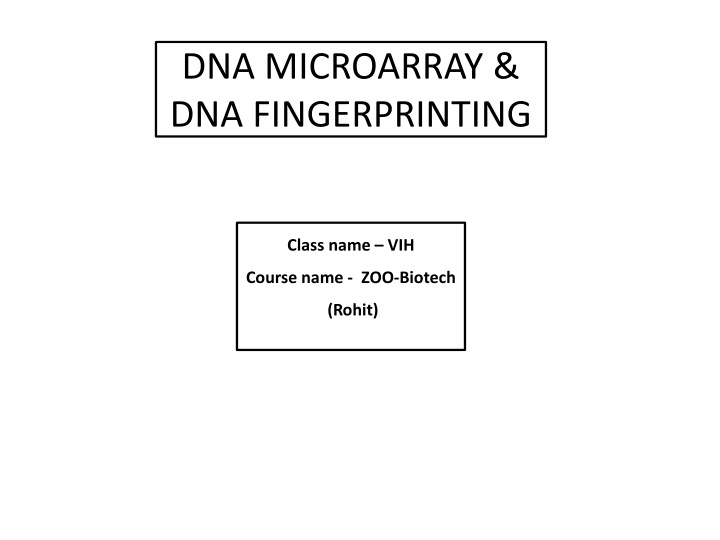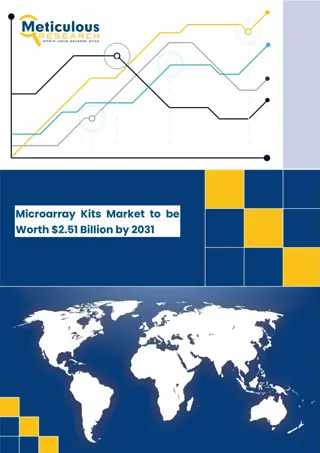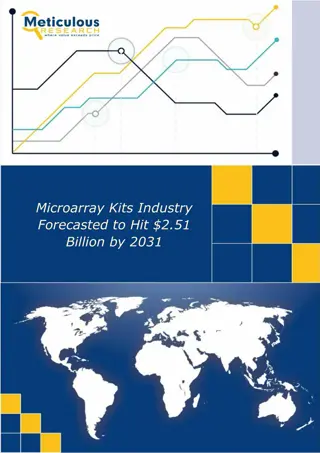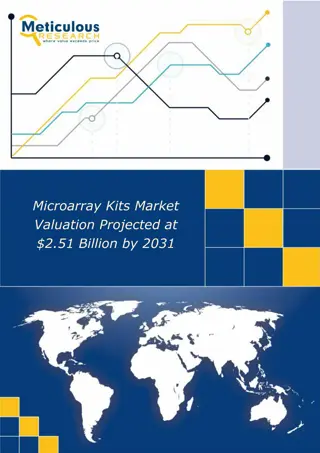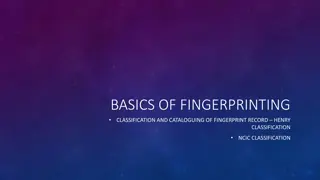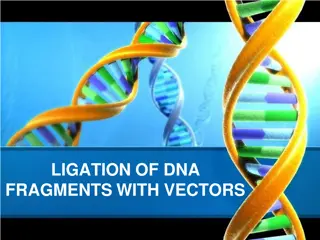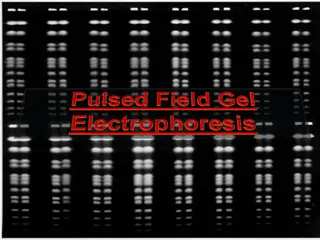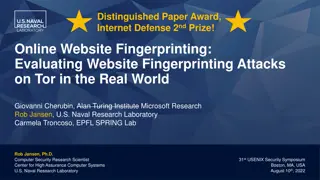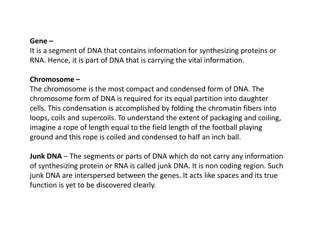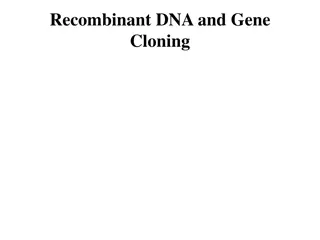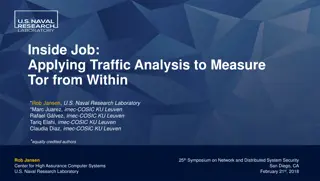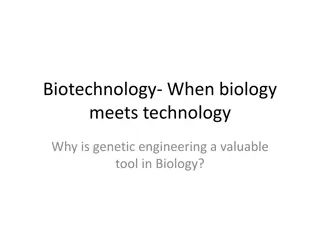DNA MICROARRAY & DNA FINGERPRINTING
Transcriptomics, gene expression, and the importance of DNA microarray technology in exploring gene expression profiles within a genome. Learn about the principles, requirements, and steps involved in microarray analysis for comprehensive gene expression studies.
Download Presentation

Please find below an Image/Link to download the presentation.
The content on the website is provided AS IS for your information and personal use only. It may not be sold, licensed, or shared on other websites without obtaining consent from the author.If you encounter any issues during the download, it is possible that the publisher has removed the file from their server.
You are allowed to download the files provided on this website for personal or commercial use, subject to the condition that they are used lawfully. All files are the property of their respective owners.
The content on the website is provided AS IS for your information and personal use only. It may not be sold, licensed, or shared on other websites without obtaining consent from the author.
E N D
Presentation Transcript
DNA MICROARRAY & DNA FINGERPRINTING Class name VIH Course name - ZOO-Biotech (Rohit)
Introduction As we know that for molecular characterisation of any gene/genome, nucleotide sequences are required. Understanding the genome function by analysing the genes and the ways the genes expressed by the genome have a key importance. There is a branch of biology called transcriptomics, which deals with gene expression in a tissue. It helps in studying the expression of genes by a genome both qualitatively- by identifying which genes are expressed and which are not expressed and qualitatively- by measuring varying levels of expression for different genes.
So, transcriptome analysis reveals gene expression profiles that for the same genome may vary from cell to cell or from tissue type to tissue type. Identifying genes expressed by a genome is essential for understanding how the genome functions. Gene expression can be checked by Northern blotting technique. But to check multiple gene expression simultaneously, we developed a technique called DNA Microarray.
What is DNA microarray DNA microarray, also known as gene chip is a solid support (like a glass slide) onto which single stranded DNA molecules are attached. Each spot of DNA on glass slide called probe which represents a single gene. It is widely used because it enables researchers to analyze all of a sample s expressed genes simultaneously. Microarray technology evolved from Southern blotting whereby fragmented DNA is attached to a substrate and then probed with a known gene. Principle It involves hybridisation of nucleotide sequences. Probe is complementary to target gene. Hybridisation produces signal.
Requirements for cDNA based Microarray Glass slide Probe (Attached to glass slide) Fluorescent dye Scanner Reverse transcriptase enzyme
Steps involved in Microarray 1. mRNA isolation from cells/tissues. 2. cDNA synthesis from isolated mRNA by reverse transcriptase enzyme 3. cDNA is tagged with fluorescently labelled nucleotides. 4. Labelled cDNAs are then denatured and incubated overnight with microarray so that they will hybridised to spot on the microarray that contain complementary DNA sequences. 5. The microarray is washed and then then it is scanned by a laser. 6. The patterns in of fluorescent spots reveal which genes are expressed in the tissue of interest. 7. The intensity of spot fluorescence indicates the relative level of expression.
Applications of DNA microarray Patterns of expression that change with the cellular state or growth conditions. Diagnosis of diseases Pathogen resistance Drug selection
DNA microarray in diagnosis Gene expression microarrays are effective for analysing gene expression patterns in genetic diseases. As the progression of a tissue from a healthy to a diseased state accompanied by changes in expression of hundred to thousand genes. For example, in one type of expression microarray analysis, mRNA is isolated from two different cell or tissue types like normal cells and cancerous cells arising from same cell type.
Microarray for expression in normal and cancer cells procedure analysing gene
Definition DNA fingerprinting is technique used to distinguish between individuals of the same species using only samples of their DNA. On average, about 99.9% of the DNA between two humans is the same. 0.1% of the DNA makes us unique. DNA fingerprinting is based on repetitive sequences present in the genome. These tandem repetitive sequences are known as Minisatellites.
Minisatellites are sequences found throughout the genome whose repeats units are 14-500 bp in length. VNTR Repeats)/minisatellites are located in the non-coding region of the genome. (Variable Number Tandem The number of repeats found at each VNTR locus varies from person to person therefore VNTR can be from 1 to 20 kb in length, depending on the person.
Why VNTR are useful for DNA profiling There are as many as 30 different possible alleles (repeat lengths) at any VNTR in a population. This can create a large number of possible genotypes. For example If a population has 4 different VNTR loci and each loci has 20 possible alleles then the possible genotypes will be 4 power to 20 genotypes.
Modern DNA profiling Presently microsatellites rather than the minisatellites. DNA profiling relies on Microsatellites, or short tandem repeats (STRs), are another group of tandemly repeated sequences consists of di-, tri-, and pentanucleotides. Like VNTRs, they are dispersed throughout the genome and vary among individuals in the number of repeats present at any site.
Steps involved in Modern DNA profiling 1. STR analysis requires tiny amount of someone s DNA. 2. It does not use restriction enzymes to cut the DNA. 3. It uses the polymerase chain reaction (PCR) to produce many copies of specific STR sequences. 4. Amplified sequences are subjected to gel electrophoresis for fragments. 5. Specific colour is produced by fragments. separation of DNA
DNA fingerprinting applications 1. Forensic investigation 2. Paternity and family relationship testing 3. Verification of military casualities Evolutionary studies.
Solving crime DNA different suspects and from crime scene. Suspect 2 shows same DNA banding pattern with that of from crime scene. profile from
Paternity Testing Compare inherited STR DNA banding patterns.
